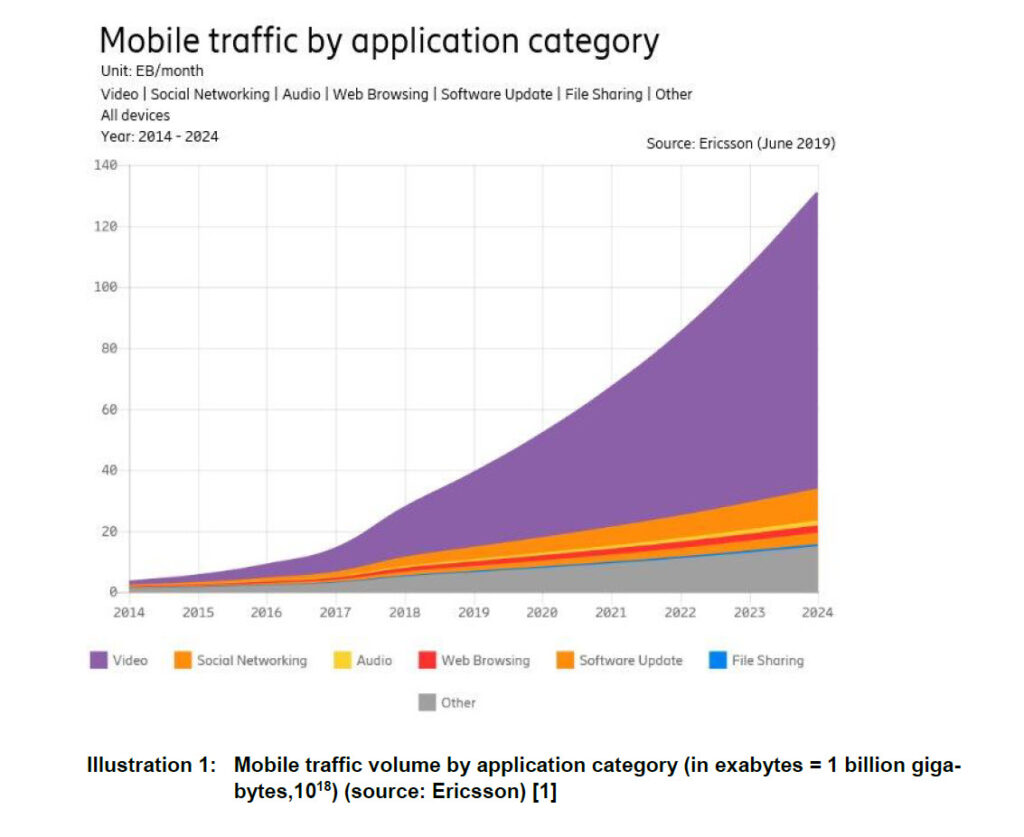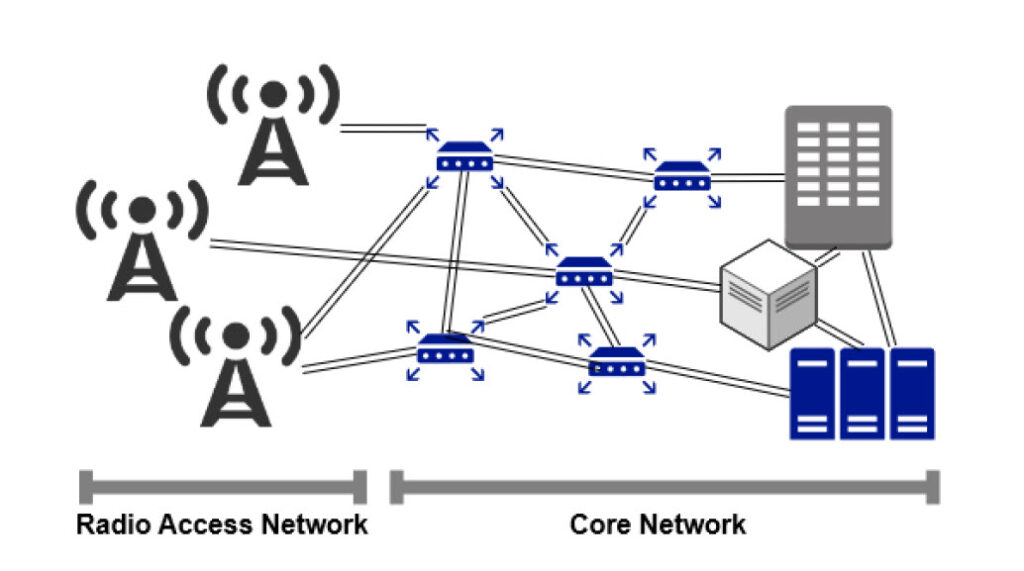Wireless Access Point in ETH Buildings
Questions about access points and the radiation associated with them keep coming up. This is reason enough to take a closer look at this topic and report on it.
Radiation through Wireless Access Point
«There is an access point (WLAN antenna) at my workplace. I have been told that this is problematic in terms of radiation. Could you please clarify for me whether it really is a problem if your workplace is about 2m – 2.5m away from the source of radiation, i.e. you are exposed to this radiation for 8.2 hours per day. «
The Answer: An Access Point at this Distance is harmless
The radiation of the access point (AP) decreases at a rate of the square of the distance from it. Your own mobile phone that you carry with you radiates by a factor of 10 times more than the access point.
«The better the connection, i.e. the closer the base station and the mobile phone are to each other and the fewer obstacles there are in the way, the lower the transmission power a mobile phone has to provide. «(Excerpt from «Bericht Mobilfunk und Strahlung» see below (Translation from report on mobile communications and radiation, German only)
Another Aspect of Mobile Reception within Buildings (in-house)
Often in-house reception is poor because of metal window frames and heavily insulated facades. However, thanks to Wi-Fi Calling, it is now possible to have mobile reception with a smartphone via the Wi-Fi network. All three Swiss providers have meanwhile fully implemented Wi-Fi Calling (Voice & SMS).
- This is another reason why we need an optimal Wi-Fi provision in the buildings.
- The closer the access point, the lower the radiation. While this may sound paradoxical, your own devices, which are close to your body, emit less radiation.
Research limit values
The permitted output/transmission power is regulated by the legislator in the NISV (Ordinance on Protection against Non-Ionising Radiation, German only). Compliance is monitored by OFCOM (Federal Office of Communications). The ordinance serves to protect people from harmful or annoying non-ionising radiation.
The permitted output/transmission power is basically frequency-dependent but not modulation-dependent. A new modulation (= new standard) does not result in additional or higher radiation exposure. For your information: From 2021, a third frequency band on 6 GHz is expected for Wi-Fi, which will probably be treated in the same way as 5 GHz (= max. 200 mW transmission power).
Safety, Security, Health and Environment department (SSHE)
A few years ago, the SSHE of ETH commissioned a study on this subject and found that even at a distance of 30 cm from the Wi-Fi access point, the applicable limit values are complied with.
At a distance of 2.4 m from the access point, this already exceeds the permissible 30 cm by a factor of 64. In other words, your own laptop or mobile phone is a much more powerful source of radiation than a wireless access point. In addition, mobile phones emit more transmission power than WLANs. This may sound like a contradiction, but it corresponds to the physical facts: The closer to the access point, the less radiation there is, because devices close to the body, such as smartphones, laptops or tablets, emit less radiation.
Example: new Octavo Building (OCT)
In future, the OCT will have around 150 access points (APs) once completed. At the moment, the ITS NET team is still working on the installation (in the staff canteen, which is currently under construction, among other areas). In addition, there will also be some outdoor APs, meaning there will also be reception in the inner courtyard and on the roof terrace once the weather gets warmer again.
ETH Zurich
The figures for the entire ETH are constantly changing (i.e. increasing). ITS NET currently operates over 5,000 APs. One reason is that ITS is working on nationwide coverage on behalf of the Executive Board.
It seems important to ITS NET that the limit values are set by SUVA (based on international guidelines). This means with the transmission powers of 100 mW (on 2.4 GHz) and 200 mW (on 5 GHz) used by us, the safety distance is 30 cm and 40 cm respectively in rooms where people regularly spend longer periods of time (i.e. especially offices, lecture halls, seminar rooms, laboratories etc.).
Mobile Phone Radiation in Comparison
As already mentioned above, your own mobile phone in your trouser pocket radiates by a factor of 10 times more than the access point. This means 2,000 mW directly on the body. «However, the human body is exposed to various sources of non-ionising radiation, both close to, and far from, the body. Remote sources include base stations for mobile communications, radio and television transmitters, WLAN routers and other people’s mobile phones. Sources close to the body include your own mobile phone, cordless phones, tablets, Bluetooth devices and laptops, etc.
Devices close to the body do not expose all parts of the body equally: When calling with a mobile phone held to your ear, for example, your head absorbs most of the radiated power. Technology also influences exposure. For example, the newer mobile phone standards are much more efficient than the older ones: Calling with 3G or 4G instead of 2G leads to significantly lower exposure. A good connection quality also has a positive effect: The better the connection is, i.e. the closer the base station and the mobile phone are to each other and the fewer obstacles there are between them, the lower the transmission power a mobile phone has to provide and thus the lower the radiated power that is absorbed in the head or other parts of the body. » (Excerpts from «Bericht Mobilfunk und Strahlung (Translation from report on mobile communications and radiation, German only»)
SUVA
- Radiation protection and radioactivity (SUVA, Germany only)
- Limit values at the workplace (SUVA PDF, German only)
5G Fact Sheet
The OFCOM fact sheet provides an overview of the 5G technology.

«The Federal Council does not currently intend to change the limit values for the protection of the population against non-ionising radiation (NIR). (Bern, 22/04/2020) In the recent past, Parliament has twice refused to relax the limits for radiation exposure. » Translation from
- «Bundesrat entscheidet über das weitere Vorgehen im Bereich Mobilfunk und 5G» (FOEN – Federal Office for the Environment / Dossier, German only)
«To protect the public from the non-ionising radiation of mobile phone antennas, the Federal Council has defined two types of limit values in the Ordinance on Protection against Non-Ionising Radiation (NISV): emission and installation limits. The emission limits provide protection against scientifically proven health effects (heating of body tissue) and must be complied with wherever people may be present, even for a short time. They are the same limit values as applied in the majority of our neighbouring countries and are between 36 and 61 volts per metre (V/m) in terms of mobile phone frequencies.
Since research has provided various well-founded observations that other effects could also occur, the NISV has set additional installation limits based on the precautionary principle of the Environmental Protection Act. The precautionary installation limits for mobile phone radiation are significantly lower than the emission limits and amount to 4 to 6 V/m. In relation to the electric field strength, each individual mobile communications installation as defined by the NISV may expose places where people regularly spend long periods of time to a maximum of about one tenth of the emission limit. Such so-called places of sensitive use (German: «Orte mit empfindlicher Nutzung», OMEN) include homes, schools, hospitals, permanent workplaces or children’s playgrounds defined by spatial planning. With the installation limits, non-ionising radiation from mobile phone antennas is more strictly limited in Switzerland than in most European countries. » from
- «Bericht Mobilfunk und Strahlung» (Translation from report on mobile communications and radiation, German only)
Exposure from Equipment operated close to the Body (Excerpt)
5.5.1 Existing technologies
«Using a mobile phone leads to exposure of a person’s head or hand to HF-NIR when the person holds the device directly to their ear for calling or for other applications such as mobile internet use. Exposure from devices (mobile phone, laptop, tablet, cordless phone, etc.) depends on the following factors:
- Duration of use: The radiation occurs in particular when the device transmits. When the device is in standby or receiving data, exposure is low.
- Distance between the device and the body: exposure decreases rapidly the greater the distance. In the case of mobile phones, for example, this can be achieved by using hands-free equipment (headsets) (reduction in exposure up to a factor of 100).
- Transmission power: The stronger the transmission power, the higher the exposure. The transmission power itself depends on:
- The device’s «transmission characteristics»: The specific absorption rate (SAR) indicates the maximum amount of radiation absorbed by the body when using the device. The lower the SAR value, the lower the exposure.
- Mobile phone technology: Using the newer technologies UMTS and LTE instead of the older GSM technology for telephony, for example, leads to significantly lower exposure.
- Connection quality: The better the connection quality, i.e. the «easier» it is for the signal to reach a base station or access point, i.e. in particular the shorter the distance between the device and the base station, the lower the transmission power that the device has to provide. » from «Bericht Mobilfunk und Strahlung» (Translation from report on mobile communications and radiation, German only)

Contact
- Armin Wittmann, Head of ICT Networks (ITS NET), IT Services
- Research: Sabine Hoffmann, ITS PR & Communication, IT Services


